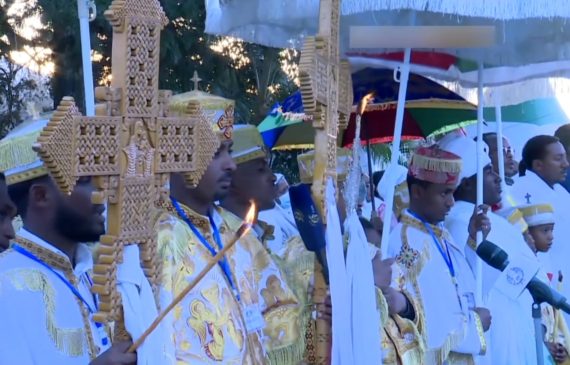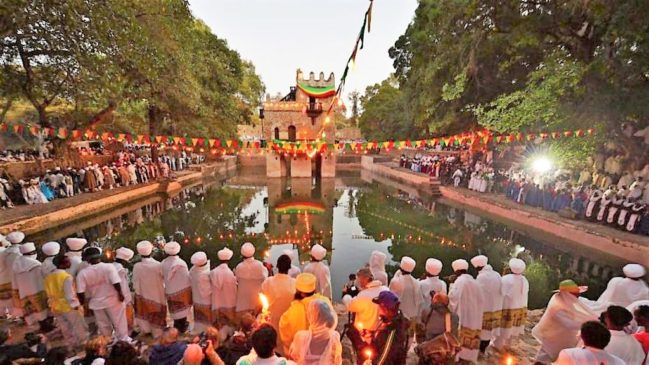Churches Are Saving Ethiopia’s Last Remaining Native Trees

In church, Getnet Alemayehu’s father liked to sit beneath a tree, one he had planted himself. In its shade the man would pray, worship, give thanks, and ponder the works of God.
Getnet grew up watching his father care for the tree in the small town of Hamusit, Ethiopia. It lies at the foot of the mountains adorning the centuries-old skyline of Gondar, a region known as the origin of the winds that amass as hurricanes and then batter the Atlantic coast in North America. Getnet—Ethiopians go by their given name—has always felt close to nature. Although he currently works in Bahir Dar, the picturesque and significantly larger capital of the Amhara state, his face lights up when he talks about his small hometown.
In particular, Getnet remembers growing up in church where, like many children in rural Orthodox Christian areas, he learned basic reading and writing. A sizeable number of children begin at a tender age the nearly two decades of spiritual education they must complete before becoming priests. Even the most liberal families with a tilt to modern education send their children to Sunday church schools that inculcate the creed of the Ethiopian Orthodox Tewahedo Church. Churches are open every day and some nights. This strong tradition of passing on Christian heritage is one reason some foreign scholars have designated Ethiopia as “the last fortress of Christianity.”
Getnet’s childhood congregation, St. Michael’s Church, sits atop the hills looking down on the town of Hamusit, five kilometers away from his home. He fondly remembers the dawns as he hurried up the hills to attend Kidasse, the nearly three-hour daily service believed to have originated with the holy apostles nearly 2,000 …
Source: Christianity Today



